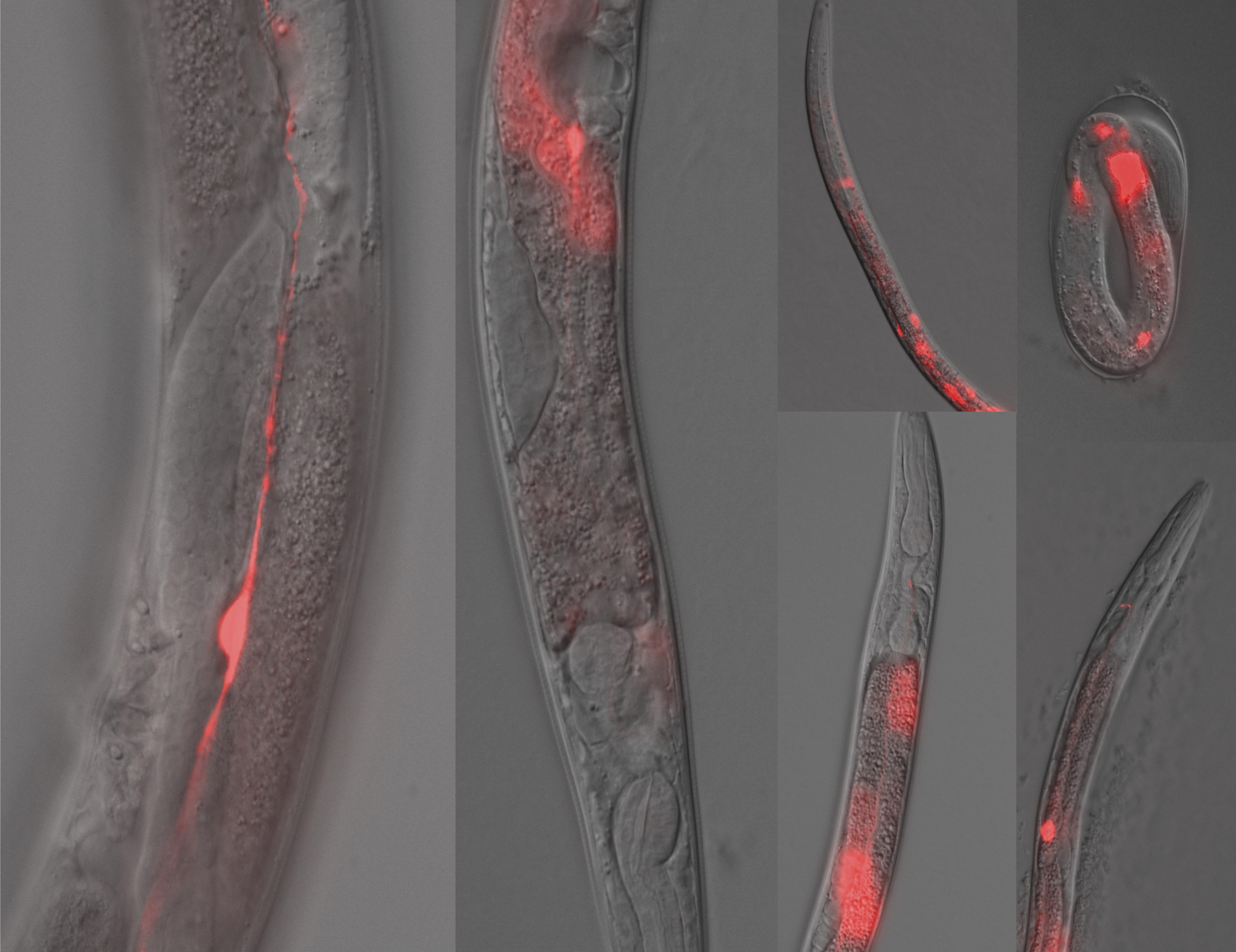All living things must respond to changing environmental conditions, and make use of different parts of their genetic code in different situations. The genetic programming that underlies flexible, or plastic, responses to different environments can be complex, but CSUN Professor of Biology Ray Hong and coauthors including two CSUN students have unraveled one example, and report their discoveries in a paper published this summer in the journal Genetics.
The paper, lead-authored by recent graduate Heather Carstensen, examines a critical bit of plasticity in Pristionchus pacificus, a nematode worm that feeds on the bacteria that propagate in the corpses of dead beetles. As long as the dead host beetle provides a sufficient food supply, the worms complete their developmental cycle from egg to adult without becoming dauers; but when the food runs low young P. pacificus enter dauer, a developmentally arrested state, to seek a new host. When they establish on that host, they wait for it to die, then exit dauer to complete development as reproductive adults and start the cycle over.

Dauer P. pacificus larvae differ from larvae on the reproductive developmental program in multiple ways, some that help them survive outside a host, and some that help them find a new host. To understand the genes that coordinate the development and host-seeking behavior, Carstensen et al. examined dauer-constitutive mutants (Daf-c) that inappropriately enter developmental diapause to become dauer larvae without the usual environmental cues. They found that P. pacificus dauer development is controlled by different genetic pathways than the equivalent process in the model nematode C. elegans. Instead, P. pacficus dauer entry is regulated by hydroxysteroid dehydrogenase (HSD), and the Daf-c mutant line carries a null allele knocking out the function of the gene coding for that enzyme. Daf-c mutant adults also showed olfactory responses to host beetle pheromones similar to non-mutant dauer larvae, which aid in finding a new host.
The results find a single developmental regulatory point responsible for dauer entry in P. pacificus, and the authors suggest that their results mean that efforts to target the dauer developmental pathway for nematode parasite control may need to be tailored to individual species. The full paper is available for download from the journal website.
Top image: Expression of fluorescent-tagged Ppa-HSD-2 in cell types throughout the body of P. pacificus (Images via Ray Hong)

